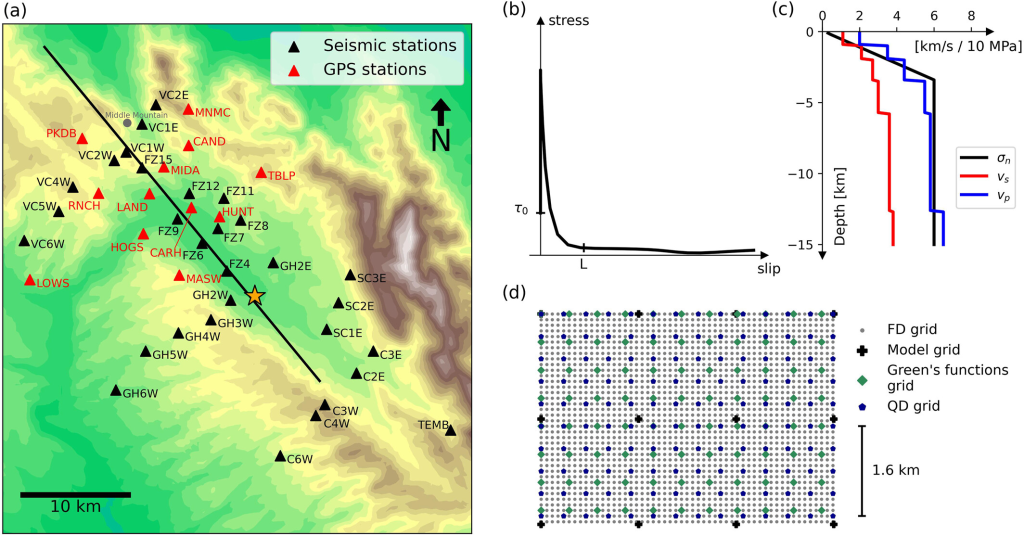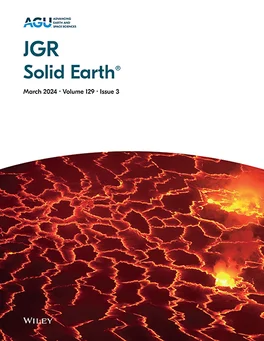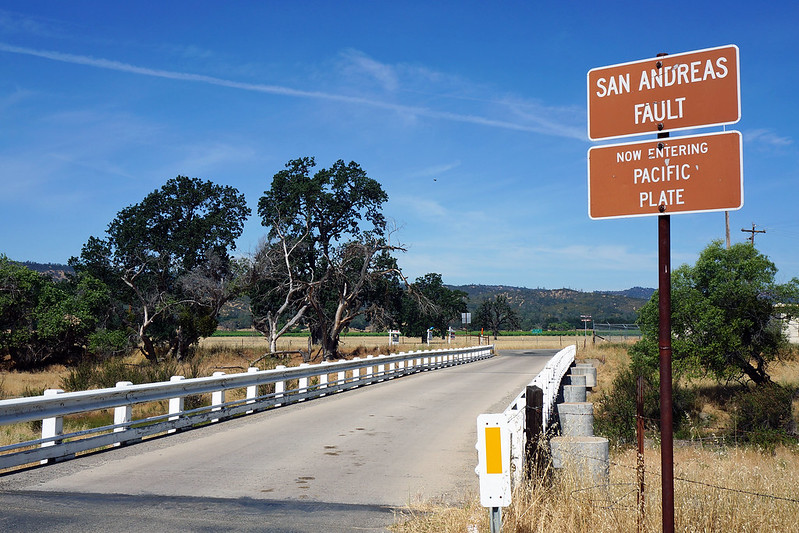Photo by Steve Boland
The 2004 Parkfield earthquake was not just another seismic event along the San Andreas Fault—it was a unique opportunity to capture and analyze a well-documented moderate earthquake in one of the most instrumented seismic regions in the world. Often called the “earthquake capital of the world,” Parkfield sits at a crucial boundary between a locked portion of the San Andreas Fault to the southeast and a creeping segment to the northwest. This transition makes it an ideal natural laboratory for studying fault behaviour, and decades of monitoring have sought to decode the mechanics of its recurring earthquakes. The 2004 event, recorded by an extensive near-fault network of over 40 strong-motion instruments and 13 GPS stations, provided an unprecedented dataset, offering a window into the earthquake’s full evolution—both during the rupture and in the following months.
Building on this rich dataset, a recent study published in JGR Solid Earth has revealed new insights into the complex relationship between coseismic and postseismic faulting. Conducted by researchers from Ludwig-Maximilians-Universität München, UC San Diego, Côte d’Azur University, and Charles University, the study applied advanced seismo-geodetic dynamic inversion techniques to reconstruct the physical processes underlying the 2004 Parkfield earthquake. By integrating seismic and geodetic data with computational models, the researchers sought to refine our understanding of fault dynamics and how stress redistributes in the aftermath of an earthquake.
Despite decades of research and extensive instrumentation in the area, the mechanics governing deep fault behaviour remain challenging to decipher. This study addresses those challenges by employing computational models to simulate both the dynamic rupture of the earthquake and the slower, postseismic deformation that followed.
A key element of the research was the application of high-performance computing to run millions of dynamic forward models for a Bayesian inversion. This approach enables tackling this highly non-linear inverse problem, allowing for the determination of the complex interactions of forces during earthquake rupture and faulting.
Through this process, they uncovered a two-phase rupture process of the 2004 Parkfield earthquake. The first phase involved a sudden release of seismic energy, generating strong shaking over a short period. The second phase was more gradual, where the fault continued to slip at a slower pace, redistributing stress over time. Additionally, the study identified specific geological structures along the fault that acted as barriers, halting or redirecting the rupture and playing a key role in determining where and how the fault moved. These barriers influenced the way afterslip—the slow movement of the fault after the initial rupture—was distributed and may have also affected the timing and location of aftershocks.

Map view of the model domain with near-fault stations utilized in the dynamic inversion. © Nico Schliwa, Alice-Agnes Gabriel, Jan Premus, František Gallovič (2024)
While this particular study did not employ one of ChEESE’s flagship simulation codes, it was led by ChEESE researchers, including Nico Schliwa and Alice-Agnes Gabriel, who played a significant role in shaping its methodology. The research is an important step toward integrating such workflows into SeisSol, ChEESE’s high-performance computing tool for earthquake modelling. By leveraging expertise in exascale computing, ChEESE provided a foundation for refining the computational techniques used in this study, aligning with its broader goal of advancing numerical simulations for geohazard research.
The findings underscore the growing role of physics-based modelling in capturing the complexities of earthquake processes. While not an immediate breakthrough in earthquake prediction, the study highlights the value of integrating seismic and geodetic data into dynamic models to improve seismic hazard assessment.
As computational capabilities continue to evolve, research initiatives like ChEESE will play a critical role in refining earthquake modelling approaches. Future integration of this workflow into SeisSol is expected to enhance its application in earthquake simulations, contributing to a deeper understanding of fault mechanics and, ultimately, improved preparedness strategies for seismically active regions.
Reference:

Schliwa, N., Gabriel, A.-A., Premus, J., & Galloviˇc, F. (2024). The linked complexity of coseismic and postseismic faulting revealed by seismo-geodetic dynamic inversion of the 2004 Parkfield earthquake. Journal of Geophysical Research: Solid Earth, 129, e2024JB029410.


